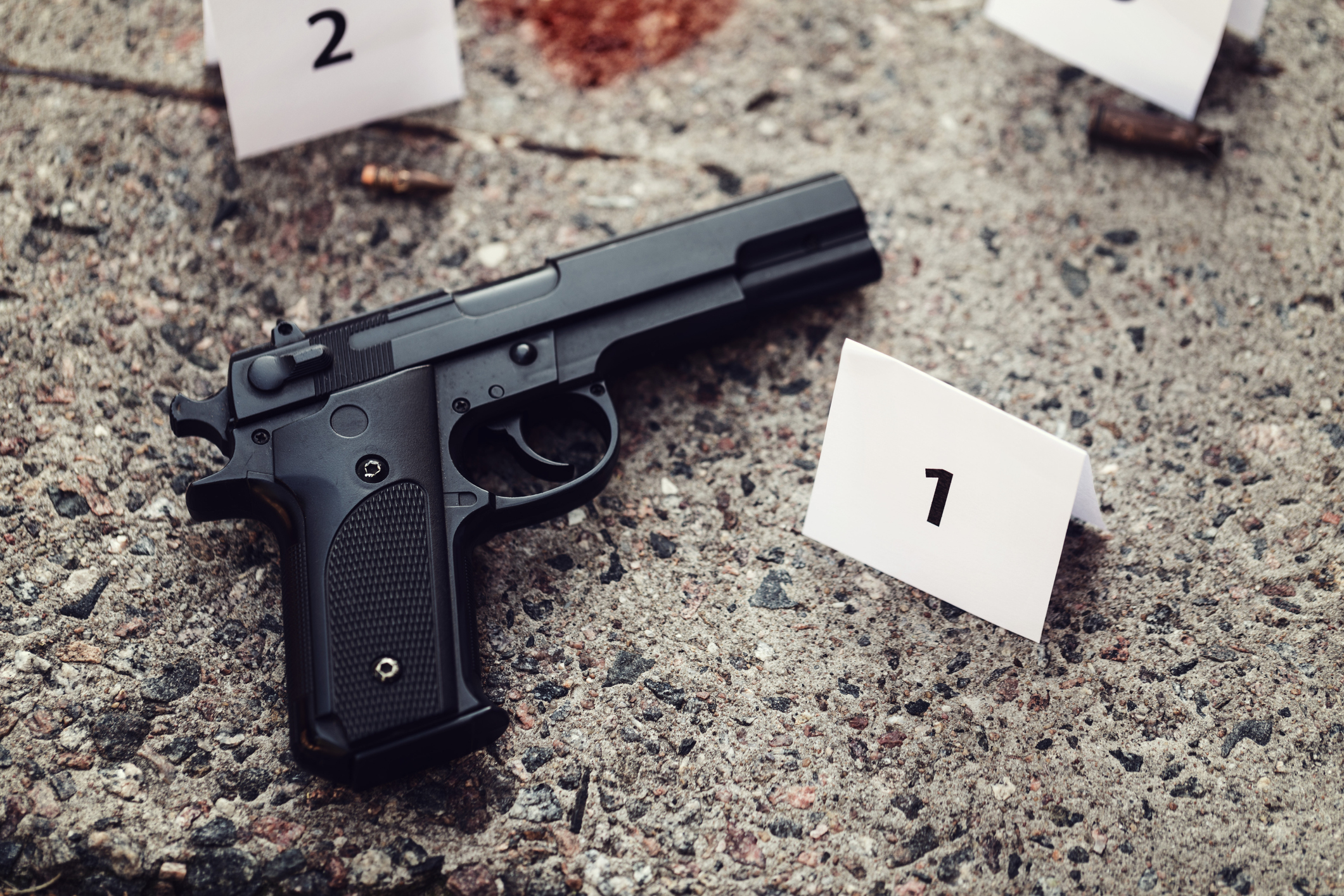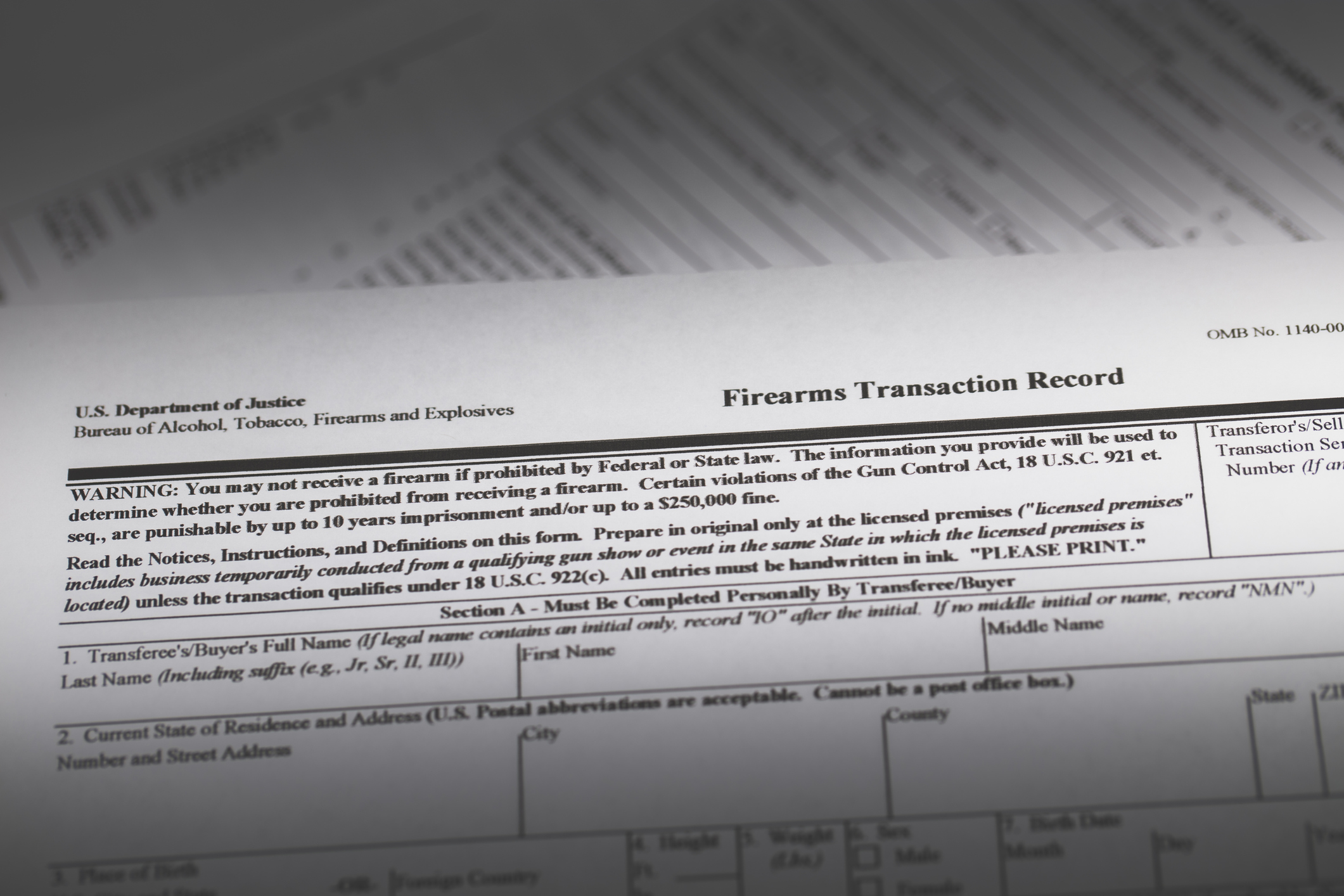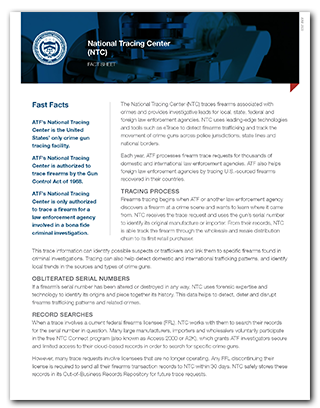

Fact Sheet - National Tracing Center

Fast Facts
ATF’s National Tracing Center is the United States’ only crime gun tracing facility.
ATF’s National Tracing Center is authorized to trace firearms by the Gun Control Act of 1968.
ATF’s National Tracing Center is only authorized to trace a firearm for a law enforcement agency involved in a bona fide criminal investigation.
The National Tracing Center (NTC) traces firearms associated with crimes and provides investigative leads for local, state, federal and foreign law enforcement agencies. NTC uses leading-edge technologies and tools such as eTrace to detect firearms trafficking and trace the movement of crime guns across police jurisdictions, state lines and national borders.
Each year, ATF processes firearm trace requests for thousands of domestic and international law enforcement agencies. ATF also helps foreign law enforcement agencies by tracing U.S.-sourced firearms recovered in their countries.
The Numbers
|
|
|
|
Tracing Process
Firearms tracing begins when ATF or another law enforcement agency recovers a firearm during an investigation and wants to learn where it came from. NTC receives the trace request and uses the gun’s markings to identify its original manufacturer or importer. From those records, NTC is able trace the firearm through the wholesale and retail distribution chain to its first retail purchaser.
This trace information can identify possible suspects or traffickers and link them to specific firearms found in criminal investigations. Tracing can also help detect domestic and international trafficking patterns, and identify local trends in the sources and types of crime guns.
Obliterated Serial Numbers
If a firearm’s serial number has been altered or destroyed in any way, NTC uses forensic expertise and technology to identify its origins and piece together its history. This data helps to detect, deter and disrupt firearms trafficking patterns and related crimes.
 Record Searches
Record Searches
When a trace involves an active federal firearms licensee (FFL), NTC works with them to search their records for the serial number in question. Many large manufacturers, importers and wholesalers voluntarily participate in the free NTC Connect program (also known as Access 2000 or A2K), which grants NTC personnel secure and limited access to their cloud-based records in order to search for specific crime guns.
However, many trace requests involve licensees that are no longer operating. Any FFL discontinuing their license is required to send all their firearms transaction records to NTC within 30 days. NTC safely stores these records in its Out-of-Business Records Repository in order to complete future trace requests. On average, NTC receives 7 million out-of-business records per month. Since 1968, ATF has received and stored several hundred million records.
Lost or Stolen Firearms
Many firearms found at crime scenes were originally stolen from licensed retailers, wholesalers, manufacturers or importers. Part of ATF’s mission is to quickly find any lost or stolen firearms before they are trafficked onward or used in a crime. For this reason, FFLs are legally required to report theft or inventory loss to ATF within 48 hours of the incident. NTC analyzes those theft/loss reports and shares with local law enforcement in order to track criminal activity, develop investigative leads, and recover the firearms. NTC also investigates reports of firearms that are lost or stolen during shipping or transport between states.
Multiple Sales
FFLs are required to inform ATF if they sell two or more handguns to the same buyer within 5 consecutive business days. These multiple sales reports, when cross-referenced with crime gun trace information, help NTC uncover illegal firearms trafficking and other criminal activity.
 Combating Violent Crime
Combating Violent Crime
Each year thousands of firearms are reported lost or stolen, and some end up being used in criminal activities. In the past, this posed a challenge for law enforcement because they did not have access to a single, accredited resource to help them identify historical data about various firearms. NTC solves that issue by using technology such as eTrace to track down gun crime origins which is used to develop links that help lead to the prosecution of violent crime gun offenders. Using technology, we are able to complete crime gun tracing at a much greater speed.



